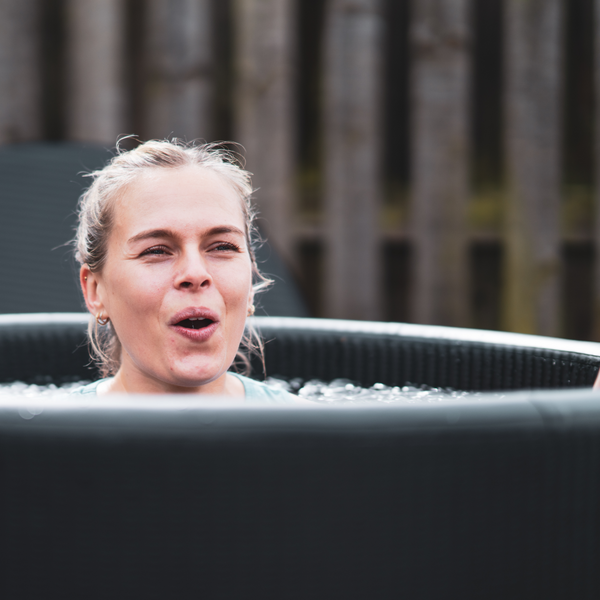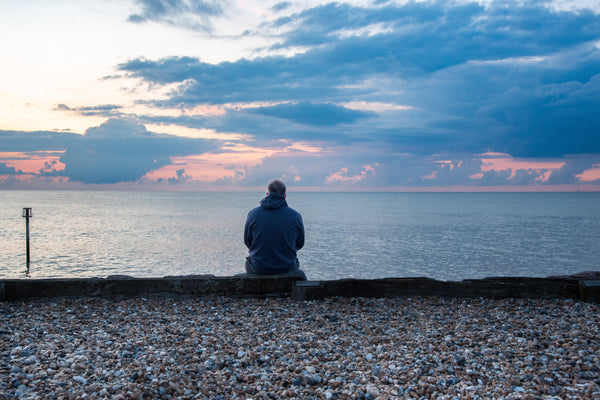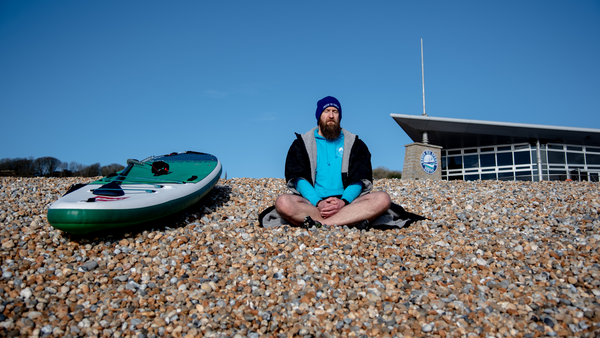Introduction
There’s something uniquely invigorating about the sensation of cold water against your skin, a brisk reminder of nature’s power and beauty. Whether you’re considering a chilly dip in a mountain stream, a refreshing cold shower, or even an icy plunge into a natural pool, the world of cold-water immersion offers an array of experiences that can both challenge and exhilarate.
But before you dive headfirst into the cold, it’s essential to understand that timing is everything when it comes to cold water immersion. The art of timing in cold water immersion is a delicate balance between embracing the cold’s therapeutic benefits and respecting its potential dangers. In this blog, we will explore the science behind cold water immersion, discover the optimal moments to immerse yourself, and equip you with the knowledge and techniques to make your cold-water experiences not only safe but enjoyable.
So, if you’ve ever wondered about the secrets of those who gracefully endure cold water or are simply intrigued by the idea of tapping into its myriad physical and mental benefits, join us as we delve into the world of cold-water immersion. Stay cool, stay in, and let’s explore the art of timing in the refreshing realm of cold water.
The Science Behind Cold Water Immersion
Cold water immersion isn’t just about braving the cold; it’s a physiological dance between your body and the elements. Understanding the science behind this interaction is key to appreciating both the challenges and benefits of immersing yourself in cold water.
The Body’s Response to Cold Water
When your body encounters cold water, it initiates a series of responses designed to maintain core temperature and ensure survival. Some of these responses include:
Vasoconstriction: Blood vessels in the skin constrict to reduce blood flow to the extremities, conserving heat for vital organs.
Shivering: Muscle contractions generate heat to counteract the drop in body temperature.
Increased Heart Rate: The heart pumps more blood to maintain circulation and core temperature.
Hyperventilation: You may start breathing rapidly in response to the shock of cold water.
Benefits and Risks
While cold water immersion can be a shock to the system, it also offers several potential benefits:
Improved Circulation: Cold water can stimulate blood flow and enhance circulation, which may have positive effects on cardiovascular health.
Enhanced Mental Resilience: Facing the discomfort of cold water can help build mental toughness, improve stress resilience, and boost mood.
Reduced Inflammation: Some studies suggest that cold exposure may reduce inflammation in the body, potentially aiding recovery from exercise and injury.
However, it’s essential to be aware of the risks associated with cold water immersion:
Hypothermia: Prolonged exposure to cold water can lead to dangerous drops in body temperature, resulting in hypothermia.
Cold Shock Response: The initial shock of cold water can cause involuntary gasping and an increased risk of drowning if not managed properly.
Cardiovascular Strain: For those with pre-existing heart conditions, cold water immersion can strain the cardiovascular system.
Balancing Act
The key to a successful and safe cold water immersion experience lies in striking a balance between embracing the cold’s benefits and mitigating its risks. Timing plays a crucial role in this delicate equilibrium, as the body’s response to cold water can vary depending on factors like water temperature, air temperature, and individual tolerance.
In the next section, we’ll delve into the art of finding the right moment for your cold-water immersion adventures. Whether you’re looking to boost your physical resilience or simply seek the thrill of embracing the chill, understanding the optimal timing will be your first step towards a rewarding experience.
Timing Matters: Finding the Right Moment
When it comes to cold water immersion, timing is more than just a matter of convenience; it’s the difference between a revitalising experience and a potentially risky venture. Let’s delve into the art of finding the right moment for your cold-water immersion, exploring the factors that influence when and where you should take the plunge.
Water Temperature
The most obvious consideration when timing your cold-water immersion is the temperature of the water itself. Cold water is typically classified into three categories:
Cold Water (10-20°C): This range is chilly but manageable for most people, especially with proper preparation and gradual acclimatisation.
Very Cold Water (0-10°C): Immersing yourself in water of this temperature requires careful planning, shorter durations, and specific gear to avoid hypothermia.
Extreme Cold Water (<0°C): Only experienced individuals should attempt immersion in water this cold, and even then, it should be done with extreme caution.
The ideal temperature for your cold-water adventure depends on your goals and experience level. Beginners may want to start with cold water, while seasoned enthusiasts may seek the challenge of very cold or even extreme cold water.
Weather Conditions
The weather plays a significant role in the comfort and safety of your cold-water immersion. Consider the following factors:
Air Temperature: Colder air temperatures can make the experience more challenging. Windy conditions can also increase the risk of hypothermia.
Time of Day: Immersing yourself in the morning may feel colder than during the afternoon, as the sun’s warmth gradually raises the water temperature.
Season: Cold water immersion can be a year-round activity but be prepared for more extreme conditions in winter.
Individual Tolerance
Each person’s tolerance for cold water varies. Factors like body fat percentage, fitness level, and previous cold-water experience all influence how your body responds to immersion. It’s crucial to know your own limits and build up gradually if you’re new to cold water activities.
Gradual Acclimatisation
If you’re new to cold water immersion, consider a gradual acclimatisation process. Start with shorter exposures to milder temperatures and progressively increase both duration and coldness to allow your body to adapt.
Safety Precautions
Never underestimate the importance of safety when timing your cold-water adventures. Always let someone know your plans, have a spotter or support person if possible, and carry safety equipment such as a safety buoy or drysuit when necessary.
By considering these factors and finding the right moment for your cold-water immersion, you can ensure a safer and more enjoyable experience. In the next section, we’ll explore how to prepare yourself physically and mentally for the cold-water challenge, ensuring you’re ready for the art of timing in cold water immersion.
Preparing for Cold Water Immersion
Before you take the plunge into cold water, it’s essential to prepare yourself physically and mentally. Proper preparation can make the difference between a chilly ordeal and a rewarding experience. Here are the key steps to get ready for your cold-water immersion:
Mental Preparation
Cold water immersion can be mentally challenging, especially if you’re new to it. Here’s how to mentally prepare:
Set Realistic Expectations: Understand that your first experiences may be uncomfortable. Embrace the idea of gradually adapting to the cold.
Stay Calm: Keep a calm and positive mindset. Anxiety can make the experience feel more challenging than it actually is.
Practice Relaxation Techniques: Breathing exercises and mindfulness can help you stay calm during the initial shock of cold water.
Physical Preparation
Your body needs to be prepared for the temperature shock. Consider the following physical preparations:
Cold Showers: Gradually expose your body to cold water by taking cold showers. Start with brief exposure and gradually increase the duration.
Regular Exercise: Maintain good overall fitness. Cardiovascular fitness can help you handle the physical stress of cold-water immersion.
Proper Nutrition: A well-balanced diet can help your body generate and retain heat more effectively.
Gear and Clothing
Appropriate gear and clothing are essential for your safety and comfort:
Wetsuits or Drysuits: Depending on the water temperature, invest in a suitable wetsuit or drysuit to provide insulation and protect against hypothermia.
Swim Caps and Gloves: These accessories can help retain heat and prevent heat loss through your extremities.
Safety Buoy: If you’re venturing into open water, consider using a safety buoy, which can provide additional buoyancy and visibility.
Gradual Progression
Don’t rush into cold water immersion without building up your tolerance. Start with shorter sessions in milder conditions and gradually work your way up to more challenging experiences.
Know Your Limits
It’s crucial to understand your personal limits. Cold water immersion isn’t a competition, and pushing yourself too hard too quickly can be dangerous. Listen to your body and be prepared to exit the water if you experience discomfort or signs of hypothermia.
Safety Precautions
Never go cold water immersion alone. Always have a buddy or a support person who can assist you in case of an emergency. Ensure someone knows your plans and expected return time.
By mentally and physically preparing for cold water immersion and taking the necessary safety precautions, you can enjoy the experience more fully and safely. In the next section, we’ll delve into specific techniques to maximise your enjoyment and safety during cold water immersion, ensuring that your timing is spot on.
Techniques for Maximising Enjoyment and Safety
Cold water immersion can be a thrilling and rewarding experience. Especially when approached with the right techniques. Whether you’re a seasoned enthusiast or a beginner, these techniques will help you make the most of your cold-water adventures while ensuring your safety:
Gradual Entry
When you step into cold water, it’s essential to ease your body into the experience. Here’s how to do it:
Toe Dipping: Start by gradually immersing your toes and feet. Allow your body to adjust to the initial shock.
Progressive Immersion: Slowly wade into the water, gradually submerging your body in stages. This approach can help your body adapt to the temperature more comfortably.
Controlled Breathing
Your breath plays a crucial role in managing the discomfort of cold-water immersion. Practice controlled breathing techniques:
Deep Breaths: Take slow, deep breaths to help calm your nervous system and control your heart rate.
Exhale Slowly: Focus on exhaling slowly, which can help prevent hyperventilation during the initial shock.
Mindful Relaxation
Mental relaxation techniques can make the experience more enjoyable:
Mindfulness: Stay present in the moment and observe the sensations in your body without judgment.
Visualisation: Imagine warmth and relaxation, which can help reduce tension and discomfort.
Movement and Exercise
Engaging in light movements and exercises in the water can generate heat and improve circulation:
Swimming: Slow, controlled swimming can help raise your body temperature and provide a sense of accomplishment.
Treading Water: Gently treading water can be an effective way to maintain warmth.
Monitor Your Body
Pay close attention to how your body responds to the cold:
Numbness: Be aware of any numbness or loss of sensation in your extremities, as this may indicate the onset of hypothermia.
Shivering: While some shivering is normal, severe and uncontrollable shivering is a sign that you should exit the water immediately.
Set Time Limits
Determine in advance how long you plan to stay in the cold water and stick to your limits. As a general guideline, start with shorter durations and gradually increase them as you gain experience and confidence.
Aftercare
Your cold-water immersion experience doesn’t end when you leave the water. Pay attention to post-immersion care:
Warm Clothing: Have warm, dry clothing ready to put on immediately after your immersion.
Hot Beverage: Enjoy a hot drink to help raise your core temperature and provide comfort.
Rest and Recovery: Allow your body to recover and warm up naturally before engaging in any strenuous activities.
Buddy System
Always have a buddy or support person with you when engaging in cold water immersion. They can provide assistance if needed and ensure your safety.
By incorporating these techniques into your cold-water immersion routine, you can enhance your enjoyment and safety. In the next section, we’ll explore the wide-ranging benefits of cold-water immersion, from physical health improvements to mental resilience.
Benefits of Cold-Water Immersion
Cold water immersion is more than just an invigorating experience; it offers a range of physical and mental benefits that can enhance your overall well-being. Let’s explore the myriad advantages of embracing the chill:
Improved Circulation
One of the immediate effects of cold-water immersion is enhanced blood circulation. When you immerse yourself in cold water, your blood vessels constrict, directing blood flow toward your vital organs. Upon exiting the cold water, your body experiences a “flushing” effect as the blood vessels dilate, increasing blood flow throughout your body. This process can promote cardiovascular health and help with issues like poor circulation.
Enhanced Mental Resilience
Cold water immersion challenges your mental resilience and helps you develop a strong mindset. Facing the discomfort and shock of cold water can improve your ability to handle stress and adversity in everyday life. It’s a powerful tool for boosting mental toughness, self-discipline, and emotional resilience.
Reduced Inflammation
Research suggests that cold exposure may help reduce inflammation in the body. Lowering inflammation levels can be beneficial for recovery from exercise, injury, and chronic conditions. Cold water immersion is believed to stimulate the release of anti-inflammatory cytokines, potentially aiding in the body’s natural healing processes.
Stress Relief
The shock of cold water can trigger the release of endorphins, which are natural mood elevators. Many people find that cold water immersion provides a sense of euphoria and relaxation after the initial shock. It’s an excellent way to alleviate stress and improve your mood, leaving you with a feeling of contentment and vitality.
Enhanced Immune Function
Regular exposure to cold water may help strengthen your immune system. Some studies suggest that cold water immersion can increase the production of white blood cells and boost your body’s ability to fight off infections. While it’s not a guaranteed method to prevent illness, it may contribute to overall immune health.
Faster Recovery
Athletes and fitness enthusiasts often use cold water immersion as a recovery tool. The cold water can help reduce muscle soreness and inflammation after intense workouts. It’s like a natural ice bath that can aid in muscle recovery and reduce post-exercise fatigue.
Increased Alertness
Cold water can jolt your system awake and make you feel more alert and focused. This can be particularly useful in the morning as an alternative to a hot shower, providing an energy boost to kick-start your day.
Enhanced Skin and Hair
Cold water can promote healthier skin and hair by improving circulation to the scalp and skin. Some people find that cold water immersion leaves their skin looking and feeling rejuvenated, and their hair shinier and stronger.
Exploring Different Cold Water Immersion Activities
Cold water immersion offers a variety of activities that cater to different preferences and goals. Whether you’re looking for a brisk swim, a rejuvenating cold shower, or an icy plunge, there’s a cold-water experience suited for you. Let’s explore some of the different cold water immersion activities and how timing applies to each:
Cold Water Swimming
Description: Cold water swimming involves immersing yourself in natural bodies of water like lakes, rivers, or the sea. It can be done recreationally or as part of open water swimming.
Timing Considerations: The timing for cold water swimming depends on factors such as water temperature, weather conditions, and personal preferences. Many cold water swimmers prefer early morning or late afternoon swims when water temperatures may be milder.
Tip: Always check water conditions, tides, and currents before venturing into open water for safety reasons.
Cold Showers
Description: Cold showers are a convenient way to incorporate cold water immersion into your daily routine. Simply turn the water temperature down to cold, gradually exposing your body to the chill.
Timing Considerations: You can enjoy cold showers at any time of the day. Some people prefer them in the morning to wake up and feel refreshed, while others use them as a post-workout recovery technique.
Tip: Start with lukewarm water and gradually reduce the temperature to avoid shock.
Ice Baths
Description: Ice baths involve submerging your body in a tub filled with cold water and ice. It’s a popular recovery method among athletes. Why not try one of our Portable Ice Baths?
Timing Considerations: Ice baths are typically used after intense physical activity to reduce muscle soreness and inflammation. The timing is crucial, as post-exercise is when your muscles can benefit most from the cold therapy.
Tip: Aim for an ice bath within a couple of hours after exercise, but no longer than 48 hours, to maximise its effectiveness.
Cold Water Therapy
Description: Cold water therapy sessions are often guided and may involve specific exercises or techniques in cold water to promote circulation, improve mental resilience, and enhance well-being.
Timing Considerations: Cold water therapy sessions are usually scheduled and led by instructors. The timing will depend on the availability of sessions and your personal schedule.
Tip: Participate in cold water therapy sessions that suit your schedule and goals, whether it’s for stress relief, fitness, or recovery.
Polar Plunges
Description: Polar plunges are events where individuals and groups immerse themselves in cold water, often for charity or as a tradition. They can take place in various locations, including beaches, lakes, and even icy pools.
Timing Considerations: Polar plunge events are typically scheduled in advance, often during specific seasons or as part of festivals. Participants should follow the event’s schedule and guidelines.
Tip: Joining a polar plunge event can be a fun and social way to experience cold water immersion while contributing to a good cause.
No matter which cold water immersion activity you choose, understanding the art of timing is essential for maximising your enjoyment and safety. Whether it’s a daily cold shower to invigorate your morning or a weekly ice bath to aid in recovery, cold water immersion can offer a wealth of benefits when timed appropriately. In the next section, we’ll discuss common mistakes to avoid, ensuring that your cold-water experiences remain enjoyable and risk-free.
Common Mistakes to Avoid
While cold water immersion can be a rewarding and invigorating experience, there are several common mistakes that people often make, which can turn it into an uncomfortable or even dangerous ordeal. To ensure that your cold water experiences remain enjoyable and safe, here are some common mistakes to avoid:
Ignoring Safety Precautions
Mistake: Failing to take safety seriously is one of the most significant mistakes in cold water immersion. Going alone without a buddy, disregarding weather conditions, or underestimating the risks can lead to accidents or even life-threatening situations.
Solution: Always follow safety guidelines, let someone know your plans, and have the appropriate safety equipment on hand, such as life jackets or safety buoys when swimming in open water.
Jumping into Extremely Cold Water Unprepared
Mistake: Plunging directly into extremely cold water without acclimatisation can be a severe shock to your system, potentially leading to cold water shock or hypothermia.
Solution: Gradually build up your tolerance by starting with milder temperatures and shorter durations. Allow your body to adapt to the cold gradually.
Staying in Cold Water for Too Long
Mistake: Overextending your time in cold water can increase the risk of hypothermia and other cold-related issues.
Solution: Set clear time limits for your cold water immersion and stick to them. Start with shorter sessions and gradually increase the duration as you gain experience.
Underestimating the Power of Cold Water
Mistake: Cold water can be deceptively powerful. Underestimating its force, such as currents or waves in open water, can lead to accidents.
Solution: Always be aware of the water conditions and respect the power of cold water. If in doubt, avoid swimming in challenging conditions.
Not Wearing Suitable Gear
Mistake: Inadequate clothing and gear can make your cold-water immersion uncomfortable and potentially dangerous.
Solution: Invest in appropriate gear, such as wetsuits or drysuits, swim caps, and gloves, depending on the activity and water temperature. Proper gear can significantly enhance your comfort and safety.
Lack of Mental Preparation
Mistake: Cold water immersion can be mentally challenging, and not preparing your mind for the experience can lead to anxiety and discomfort.
Solution: Practice mental techniques like deep breathing, relaxation, and visualisation to help stay calm and focused during cold water immersion.
Pushing Through Extreme Discomfort
Mistake: While it’s essential to challenge yourself, pushing through extreme discomfort or pain during cold water immersion can be harmful.
Solution: Listen to your body. If you experience severe shivering, numbness, or extreme discomfort, it’s time to exit the water and warm up.
Neglecting Aftercare
Mistake: Post-immersion care is often overlooked but is crucial for your safety and well-being.
Solution: Have warm, dry clothing ready for after your cold-water session. Enjoy a hot drink, rest, and allow your body to return to its normal temperature before resuming other activities.
By avoiding these common mistakes, you can make your cold-water immersion experiences safer and more enjoyable. Remember that the art of timing in cold water immersion also includes knowing when to exercise caution and when to push your boundaries responsibly. In the final section, we’ll wrap up our exploration of the topic and encourage readers to embrace the world of cold water on their terms.
Conclusion
As we come to the end of our journey into the art of timing in cold water immersion, it’s clear that the world of cold water offers a plethora of opportunities for those willing to embrace it. Whether you seek physical resilience, mental strength, or simply the invigorating thrill of plunging into chilly waters, the key to a successful and rewarding experience lies in understanding when and how to take the plunge.
Cold water immersion isn’t just about enduring the cold; it’s a dance between the body, the elements, and your own limits. By appreciating the science behind it, finding the right moment, and preparing both mentally and physically, you can unlock a world of benefits and pleasures that cold water has to offer.
However, it’s crucial to remember that timing is a personal journey. Your cold-water immersion experience is unique to you. Listen to your body, respect your limits, and never compromise on safety. Engage in the art of timing responsibly, and you’ll find that the world of cold water can be both a challenging adventure and a profound source of well-being.
So, whether you’re a seasoned cold-water enthusiast or someone intrigued by the idea of exploring this invigorating realm, take the plunge and discover the rewards that await you beneath the surface. Stay cool, stay in, and let the art of timing in cold water immersion become a part of your life’s vibrant tapestry.
Embrace the chill, and may your cold water journeys be filled with moments of discovery, resilience, and exhilaration.
Additional Resources
As we conclude our exploration of the benefits of cold exposure and its potential for wintertime wellbeing, we’d like to provide you with a list of additional resources. These resources can serve as valuable references and tools for those interested in learning more about cold exposure, ice baths, and related topics:
Online Communities and Forums
The Cold Pod Community: Website
Cold Exposure and Ice Bath Resources
The Cold Pod: Blog
Taking the Plunge: How to Safely Enjoy Cold Water Dipping: Blog







